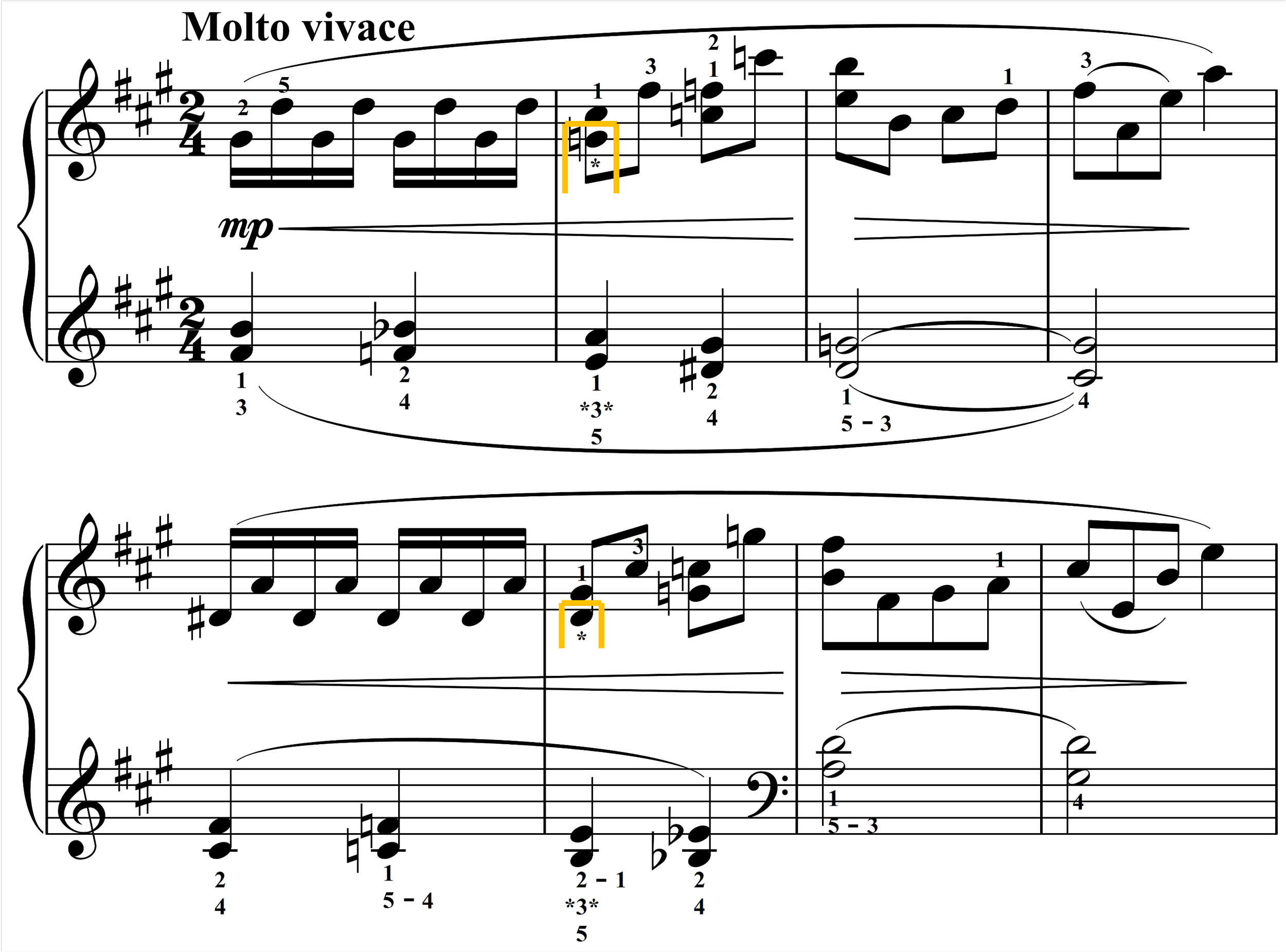Fingerings in Italics are Liszt’s.
“These notes are easily within the right hand’s reach.”
Submitted by Michael Clark
Published on 1/1/2020
Fingerings in Italics are Liszt’s.

“These notes are easily within the right hand’s reach.”
Submitted by Michael Clark
Published on 1/1/2020
Fingerings in Italics are Liszt’s.

“Finding a suitable fingering for playing the C-double-sharp in the right hand is difficult. Taking it in the left hand solves the problem.”
Submitted by Michael Clark
Published on 1/1/2020
Fingerings in Italics are Liszt’s.

“Playing the D in the left hand requires a wide leap that can be avoided by taking the D in the right hand.”
Submitted by Michael Clark
Published on 1/1/2020

“Taking the D-sharp in the right hand prevents the left hand having to cross over for one note, which I prefer to avoid when possible.”
Submitted by Michael Clark
Published on 1/1/2020

“Taking the top notes of these large rolls in the right hand allows for the bass note to be held for a clearer pedal change.”
Submitted by Michael Clark
Published on 1/1/2020

“Taking the top notes of these large rolls in the right hand allows for the bass note to be held for a clearer pedal change.”
Submitted by Michael Clark
Published on 8/11/2021

“I treat all of these figures as tremolos between the hands. The increased awkwardness is overshadowed by immediate gains in rhythmic precision.”
Submitted by Michael Clark
Published on 8/11/2021

“The C-sharp can be taken into the right hand to shorten the left hand’s quick leap.”
Submitted by Michael Clark
Published on 1/1/2020

“I find taking this note with the left hand thumb slightly easier than crossing over with right-hand 2.”
Submitted by Michael Clark
Published on 2/15/2020

“Ending with an octave feels secure.”
Submitted by Michael Clark
Published on 2/15/2020

“I have more control over the melody sound when I take the whole accompaniment in the left hand.”
Submitted by Michael Clark
Published on 2/15/2020

“Taking the tenor D with the right-hand thumb in m. 34 helps me voice that line and maintain legato without pedal, which in turn facilitates a short articulation for end of the right-hand slur.”
Submitted by Michael Clark
Published on 1/5/2024

“Taking the tenor D with the right-hand thumb in m. 50 helps me voice that line and maintain legato without pedal, which in turn facilitates a short articulation for end of the right-hand slur.”
Submitted by Michael Clark
Published on 1/5/2024

“This fingering helps me highlight the accented melody with stronger fingers.”
Submitted by Michael Clark
Published on 1/5/2024

“I begin this piece with the right hand above the left hand. Taking the G-natural in m. 2 into the left hand eliminates the need to reverse the hands and better prepares the right hand for the next position.”
Submitted by Michael Clark
Published on 10/14/2023

“Taking these two melody notes in the left hand allows the right hand more time to prepare for its next position.”
Submitted by Michael Clark
Published on 1/5/2024

“The F-sharp can be easily played by the right hand to avoid a roll or stretch.”
Submitted by Michael Clark
Published on 10/14/2023

“Taking the F-sharp in the left-hand facilitates a legato connection while sustaining the half notes.”
Submitted by Michael Clark
Published on 10/14/2023